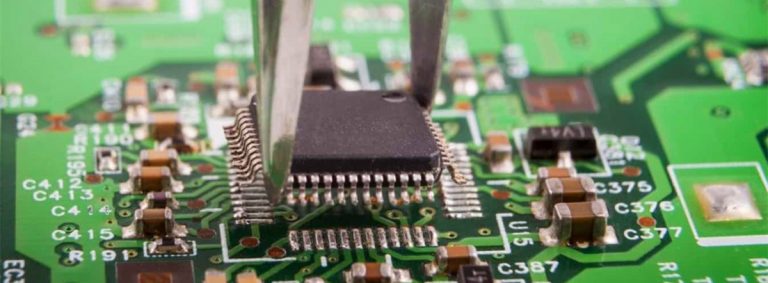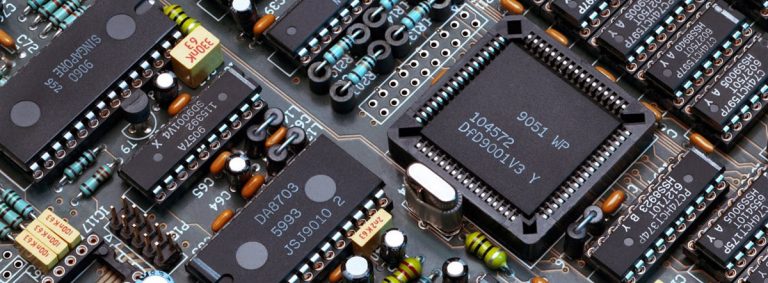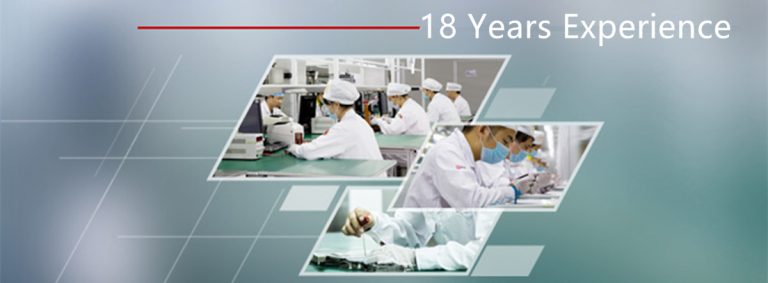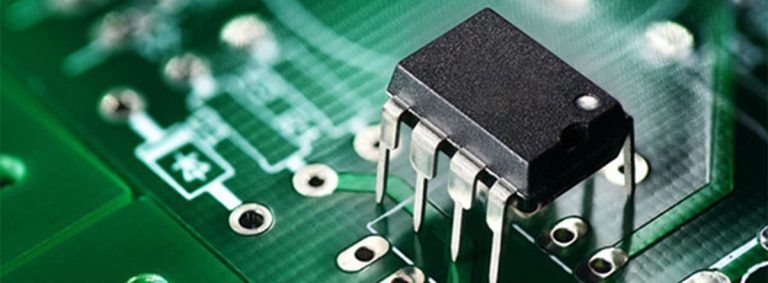How to Save PCB Manufacturing Costs 20 Essential Tips
In the dynamic landscape of PCB manufacturing, understanding how to calculate costs accurately is a vital skill for success. This comprehensive guide will walk you through the intricacies of PCB manufacturing costs while providing insights into cost-saving strategies that can give you a competitive edge. Let’s embark on this journey to master the art of calculating PCB manufacturing costs.

Breaking Down PCB Manufacturing Costs
1. PCB Design Services: A Foundation for Success
The journey begins with PCB design services. Collaborating with experienced designers not only enhances the quality of your product but also influences your manufacturing costs. Design intricacy and the expertise of your design team play a crucial role in shaping your budget.
2. Circuit Board Size Matters
The dimensions of your circuit board have a direct impact on material usage and fabrication processes. Larger boards may lead to increased material expenses and intricate manufacturing steps, driving up costs.
Expanding the size of the PCB will require more materials and time to manufacture the final product, resulting in higher costs. The price of a PCB increases proportionally to the surface area of the board, which you can use to figure out how much your product will cost extra as you expand beyond the standard size. Irregular size and imposition size will also affect the utilization rate of the board, especially the expensive brand PCB material.
The larger the size of the PCB board, the more PCB base material will be consumed, and the PCB base material is the largest piece of raw material expenditure in circuit board production, so the general price calculation is based on the size multiplied by the fixed board cost coefficient. PCB board formula: length * width * unit price / panel size.
3. Navigating PCB and Electronic Material Costs
Material selection is a key determinant of your PCB manufacturing costs. Delve into the world of materials, exploring the best choices for your project. Learn about the cost implications of different materials and how selecting the right ones can optimize your budget.
The quality of PCB material will also affect the cost of PCB production. The material include FR4 make for FR4 PCB, aluminum substrates make for MPCB, high TG boards, and branded boards. Different boards have different prices. The Top PCB Material brand include Rogers, Isola, Dupont, Shengyi Technology,The price of Sun ink is relatively high. Generally, some Japanese-funded circuit board factories and high-end precision circuit boards will use it
Uncover the best materials for PCBs that strike a balance between performance and cost. Delve into the FR4 vs. FR5 debate to make informed material choices. I will introduce you about PCB material brand, and their advantage, disadvantage and application in another article.
4. Decoding PCB Layers
The number of layers in your PCB contributes to its complexity and manufacturing process. Weigh the benefits of multiple layers against their impact on costs to make informed decisions.
The price of a PCB project will be significantly affected by the number of layers. In a high-layer count PCB, each sandwich core needs to be processed individually, and the larger the number of layers, the higher the processing requirements, resulting in an increase in project cost. In addition, the project cost is affected by the overall Factors such as thickness, presence of buried and blind vias, sockets, back drilling, and additional milling.
One approach is to optimize the design of the PCB, focusing on reducing its complexity and size. Simplifying the design can lead to cost savings in terms of material usage and manufacturing time, Choosing the right PCB manufacturer for cost-effective production
5. Innovations and technologies driving cost efficiencies in PCB manufacturing
Choosing the right assembly technology – whether surface mount technology (SMT) or through-hole technology – can significantly affect your costs. Understand the nuances of each technology to align with your budgetary goals.
Advancements in technology have played a significant role in driving cost efficiencies in PCB manufacturing. One such innovation is the emergence of automated assembly systems. These systems utilize robotic arms and high-speed machinery to streamline the assembly process, reducing labor costs and increasing efficiency.
Selecting the right PCB manufacturer is crucial for achieving cost-effective production. It is essential to partner with a manufacturer who has a proven track record of delivering high-quality PCBs at competitive prices.
6.PCB Design Complexity and Its Influence
The degree of design complexity directly affects manufacturing time and effort. Learn to evaluate design intricacy and allocate resources wisely to ensure optimal cost-efficiency. Additionally, the development of advanced software tools for PCB design and analysis has enabled engineers to optimize designs, resulting in cost savings. Furthermore, the introduction of additive manufacturing techniques, such as 3D printing, has revolutionized the prototyping phase, allowing for faster and more cost-effective iterations. By embracing these innovations, businesses can stay at the forefront of cost-efficient PCB manufacturing.
It can be related to complexity, number of layers, number, and components added to the board. An expensive type of board is known as a 32-layers printed circuit board. These PCBs are very complex, and it will cost on the order of hundreds of dollars to produce them, that is why multilayer PCBs are more expensive than double-layer PCBs, Such as HDI PCB, blind buried via PCB. How components are placed also adds to PCB cost. You can reduce costs by reevaluating where components are placed in your design. Designing for manufacturability is a powerful strategy to reduce costs. Learn how to optimize your designs for smoother manufacturing processes and enhanced cost-efficiency.
7. PCB Surface Finish
Depending on the surface finish you choose for your PCB, the cost can fluctuate. Standard PCB finishes, such as OSP and HASL, are more cost-effective and still provide decent solderability. However, other special surface treatments such as immersion silver, immersion gold, aalund gold fingers will be much more expensive. LF HASL, Imm Ag, Imm SN, and ENIG vary in price, with LF HASL being the most cost-effective, and ENIG and Golden Finger being the most expensive.
The total number of components (DIP and SMD) in the printed circuit board design directly affects the manufacturing cost. When you ensure that the PCB design is very efficient, then you can minimize as well as low cost, using industry standard component package sizes helps to reduce cost.
8. Line width and line space
When the hole diameter of one board exceeds 0.2mm, the hole diameter of the other board is less than 0.2mm, which will result in different drilling costs; the two circuit boards are the same in other positions, but the line width and line spacing are different, one of which is greater than 4mil, and the other Less than 4mil will lead to different production costs
9. PCB Copper and board thickness
Copper foil thickness board has an important relationship with PCB material. Sheet material: FR-4, CEM-3, this is our common double-sided and multi-layer sheet. Its price is also related to the thickness of the plate and the thickness of copper and platinum in the middle of the plate. Our common plate thicknesses are: 0.4mm, 0.6mm, 0.8mm, 1.0mm, 1.2mm, 1.5mm, 1.6mm, 2.0mm, 2.4 mm, 3.0mm, 3.4mm, while the thickness of our conventional sheet is 1.6mm and the price difference is not big.
The thickness of conventional copper foil is 1oz, and thicker copper foil is more expensive, because the thicker the copper, the heavier the price, the more expensive it is. The thickness of copper and platinum is generally divided into: 18 (2/1OZ), 35 (1OZ), 70 (2OZ), 105 (3OZ), 140 (4OZ), etc. You may also experience higher shipping costs
10. PCB Solder Mask and Silk Screen
Regarding solder resist ink, there is also a certain price difference between ordinary thermosetting oil and photosensitive green oil. The color of PCB ink can be freely selected according to the needs of customers, and the prices of inks of different colors are also different.
Ink cost, in the production of PCB, most of the solder resist character inks are green oil white characters and ordinary inks. If there are special needs when making boards and the order quantity is very small, the manufacturer will waste a lot of ink, so choose non- The price may be much more expensive when the ink is green and white or when a certain brand of ink is specified
The most common green ink is moderate in price and stable in quality, which is why green ink is used the most. The price of different screen-printing ink brands also varies greatly.The price of Sun ink is relatively high. Generally, some Japanese-funded circuit board factories and high-end precision circuit boards will use it
Each component package must be connected or added to the board through a unique process. If the purchased board has a sophisticated, complex, or multi-component package, then the manufacturing cost will increase significantly.
11. Embracing Economies of Scale
Production batch size is a critical factor in cost calculation. Discover how larger batch sizes can lead to lower costs per unit, harnessing economies of scale for your advantage.
12. PCB Delivery Time
Urgent projects may require expedited manufacturing processes, impacting costs. Strike a balance between time constraints and budget considerations for successful cost management.
PCB boards that need to be expedited are more expensive than PCB boards with normal delivery dates, and a part of the expedited fee needs to be added. The faster the expedited fee is, the more expensive it is. Generally, the fastest expedited process for single and double panels is about 12 hours. Anyone who has experienced PCB expedited proofing knows that a certain fee will be charged for both expedited PCB prototyping and mass production.
13. PCB Packaging Selection
Packaging plays a pivotal role in protecting your PCBs and influencing costs. Explore packaging options that safeguard your products while maintaining budget efficiency. The protective measures during the transportation process include moisture-proof packaging, anti-vibration packaging, anti-static packaging, Packaging materials, these are also the most important factor to Increase PCB manufacturing cost.
14. PCB Standards Certification
It also depends on the process standard; we usually use IPC2 level, but some customers will have higher requirements (such as Japanese capital). Our common ones are: IPC2.IPC3. Enterprise standards, military standards, etc. Of course, the higher the standard, the higher the price. Adhering to industry standards and obtaining certifications is essential, but it can introduce additional costs. Learn how to navigate compliance while optimizing your budget. you can read the packing detail in this article How Should the SMT Electronics Factory Transport the PCB Board?
15. Leveraging PCB Equipment Capability
Investing in advanced equipment can enhance efficiency and quality, impacting both initial investment and operational costs. Discover how to leverage equipment capability for optimal outcomes.
16. Maximizing Production Volume
Production volume is closely tied to cost. Explore strategies to maximize your production volume without compromising quality, driving down costs in the process. PCB prototype is usually charged according to the information and process requirements provided by the customer. For example, the number of boards, process requirements, ink color, board thickness, degree of difficulty, etc., are combined to evaluate the price. It is not a general question of how much a printed circuit board is made.
The rise of raw materials, and the increase in the cost of technical personnel. Circuit boards with complex process requirements are relatively high compared to the production requirements, and the price is naturally higher than that of ordinary processes. Another one factor that PCB prototype is not so expensive as bulk PCB production is the Mold fee and test fee.
17. Fixed PCB engineering costs and film costs
The price base of the film cost remains unchanged, but the more layers of circuit boards, the more film sheets will be consumed, so the cost will also be higher. The engineering cost mainly involves the processing of engineering data and the production of production tools. The longer the production time for more boards, the higher the engineering fee will be charged, but this fee is generally fixed.
18.The Importance of PCB Inspection and Testing
Thorough inspection and testing are crucial for product quality. Dive into the world of AOI vs. X-ray inspection and PCB reliability testing to understand their implications on costs. Navigate the realm of PCB testing costs by implementing smart testing strategies. Learn how to prioritize testing methods based on project requirements and budget considerations.
PCB Mold fee and test stand
(1) Mold cost, for samples and small batches, the general board factory adopts the drilling and milling shape and will not charge additional milling fees. When making large batches, it is required to open the mold and punch the board, so there is a set of mold costs. The general quotation of the board factory is above 1000 RMB.
(2) Test fee: Flying probe test is generally used for the prototype, and the board factory generally charges a test fee ranging from 100-400 yuan; a test frame is required to be tested in batches, and the quotation of the test frame is generally between 1000-1500 yuan.
19. Exploring PCB Outsourcing Options
Outsourcing can be a cost-effective solution for certain projects. Discover the benefits and considerations of outsourcing PCB manufacturing to optimize your budget. Some PCB processing may need to outsource to another PCB factory for production, This is higher than the cost of the entire process in a PCB production.
20. Tools and software for PCB cost estimation and analysis
To effectively analyze and estimate PCB manufacturing costs, businesses can leverage various tools and software solutions. Cost estimation software helps in accurately calculating material costs, labor costs, and overhead expenses based on the design specifications. It enables businesses to compare different production scenarios and make informed decisions. Additionally, simulation software allows engineers to assess the manufacturability of a design and identify potential cost-saving opportunities. These tools streamline the cost analysis process, enabling businesses to optimize their manufacturing processes and achieve greater cost efficiencies.
Conclusion
Mastering the art of calculating PCB manufacturing costs is essential for staying competitive in the industry. By understanding the intricacies of design, materials, assembly, testing, and more, you can optimize your budget while maintaining product quality. Implement cost-saving strategies and embrace efficient practices to elevate your PCB manufacturing journey. Empower yourself with knowledge and embark on a path of cost-efficient success in the dynamic world of PCB manufacturing.Remember, each decision you make along the way impacts your costs, and staying informed is the key to achieving your cost-efficiency goals.







